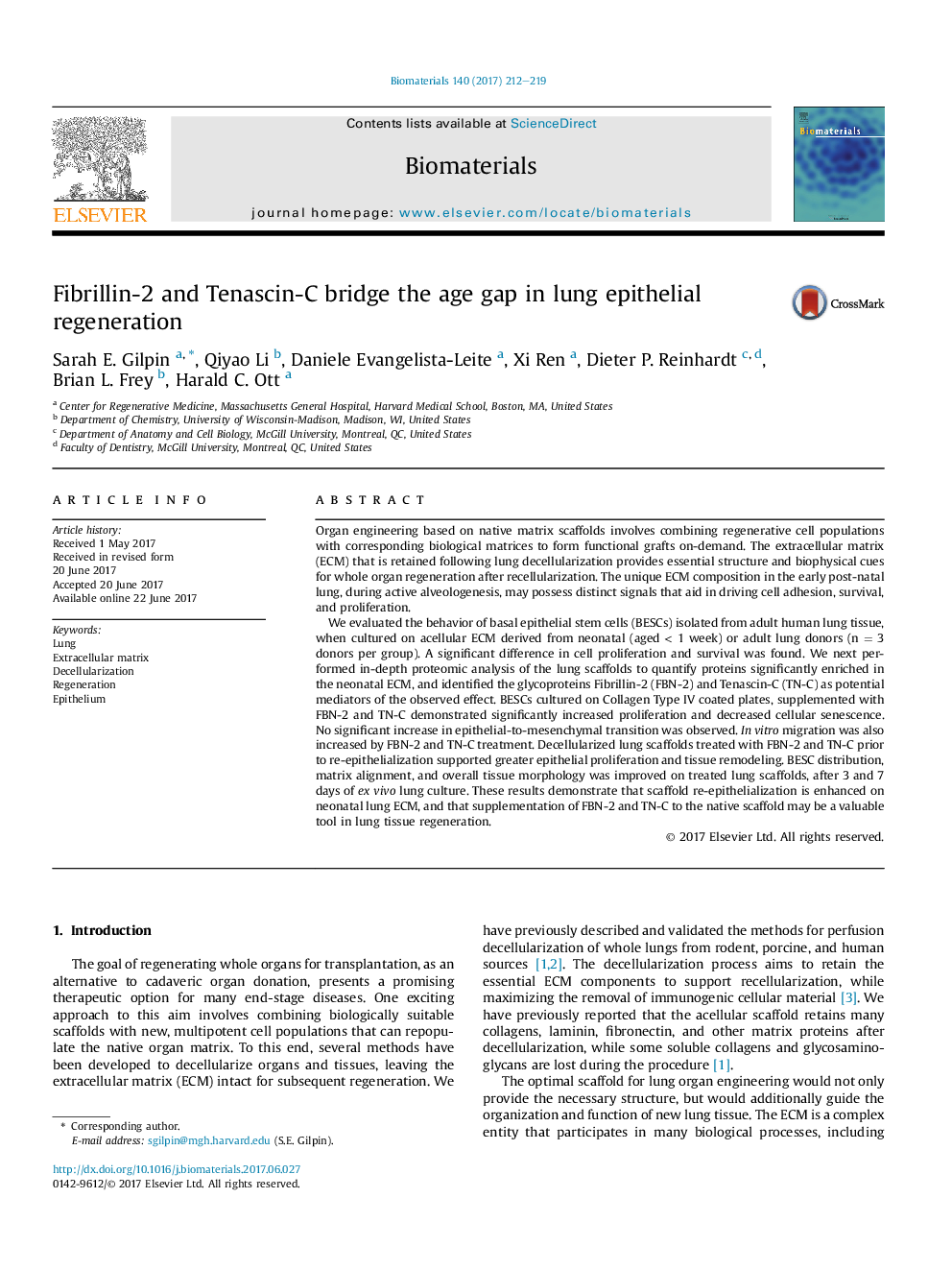| Article ID | Journal | Published Year | Pages | File Type |
|---|---|---|---|---|
| 6450567 | Biomaterials | 2017 | 8 Pages |
Organ engineering based on native matrix scaffolds involves combining regenerative cell populations with corresponding biological matrices to form functional grafts on-demand. The extracellular matrix (ECM) that is retained following lung decellularization provides essential structure and biophysical cues for whole organ regeneration after recellularization. The unique ECM composition in the early post-natal lung, during active alveologenesis, may possess distinct signals that aid in driving cell adhesion, survival, and proliferation.We evaluated the behavior of basal epithelial stem cells (BESCs) isolated from adult human lung tissue, when cultured on acellular ECM derived from neonatal (aged < 1 week) or adult lung donors (n = 3 donors per group). A significant difference in cell proliferation and survival was found. We next performed in-depth proteomic analysis of the lung scaffolds to quantify proteins significantly enriched in the neonatal ECM, and identified the glycoproteins Fibrillin-2 (FBN-2) and Tenascin-C (TN-C) as potential mediators of the observed effect. BESCs cultured on Collagen Type IV coated plates, supplemented with FBN-2 and TN-C demonstrated significantly increased proliferation and decreased cellular senescence. No significant increase in epithelial-to-mesenchymal transition was observed. In vitro migration was also increased by FBN-2 and TN-C treatment. Decellularized lung scaffolds treated with FBN-2 and TN-C prior to re-epithelialization supported greater epithelial proliferation and tissue remodeling. BESC distribution, matrix alignment, and overall tissue morphology was improved on treated lung scaffolds, after 3 and 7 days of ex vivo lung culture. These results demonstrate that scaffold re-epithelialization is enhanced on neonatal lung ECM, and that supplementation of FBN-2 and TN-C to the native scaffold may be a valuable tool in lung tissue regeneration.
